The Beautiful Martyr
The hospital room is quiet. The daughter is dying. The mother, frantic and helpless, hovers near the bed. The nurses speak in hushed tones. The doctor offers solemn updates. But the outcome is never in question. We all know how this ends. The white coat god just told us, and we never question a white coat god.
This is Terms of Endearment — and this is how an entire generation of women was taught to suffer bravely and die beautifully.
Debra Winger’s character, Emma, is a young mother dying of cancer. She doesn’t fight. She doesn’t question. She follows every medical directive, even as her body deteriorates. Her mother, Aurora, played by Shirley MacLaine, is fiery, loud, demanding — but only within the walls of the hospital. Her most iconic scene is a meltdown over the nursing schedule: yelling, begging for pain meds, not storming out with her daughter. Her rebellion is emotional, not spiritual. She rages, but still submits to the perceived inevitable. She rages for more of the poison.
No one ever questions the diagnosis. No one seeks another path. The diagnosis is written in stone. The message to accept your fate and do so with dignity and bravery.
The spell is clear: You grieve, you obey, and then you die.
And when Emma finally says goodbye to her children from the hospital bed — medicated, immobilized, and surrounded by machinery — the viewer doesn’t just watch. She subconsciously rehearses. She feels it. Mirrors it. Learns it.
Then came Beaches — a film that perfected the formula.
I saw the movie when it came out, sitting next to my mom and sister, watching it on a VCR we’d rented from a video store 80 miles away — because we didn’t have one in our tiny town. Back then, movies felt sacred. We’d pick out three, rent them for the week, then mail them back before the deadline. It wasn’t background noise. It was an event. A rare portal into the world of big-city kids. Maybe that’s why it hit so hard.
To this day, I still feel a sadness I can’t explain — a hollow ache when I see those images of the two girls laughing, carefree, not yet touched by the tragedy just around the corner. How can I feel nostalgia and heartbreak, nearly 40 years later, over something that never even happened?
That’s the spell of Hollywood.
And it makes me ask: Why do they make so many shows about people dying — and call it entertainment?
In Beaches, Barbara Hershey plays the beautiful, elegant martyr. Her character? Struck down by a rare disease most viewers had never heard of: viral cardiomyopathy, supposedly caused by the Coxsackie B virus. A mouthful of medical theater and predictive programming? Viral Cardiomyopathy is also known as…drum roll please? Myocarditis of course! And coxsackie B? Now they are just making fun of us. The actual cause of myocarditis?
In the film, it weakens her heart until it can no longer pump enough blood to keep her alive. At the time, the condition was considered fatal, with no treatment and no cure, just soft lighting, slow death, and a final performance of sorrow. The characters make the best of it, tug at our collective heartstrings. There is no exploration of healing. No investigation into cause. Just a white coat god’s decree, a gentle, lovely sigh, and a descent into the inevitable fate.
The illness serves no narrative purpose but one: to initiate the heroine’s death ritual, and to make sure the audience follows her to the grave — emotionally, psychologically, and unconsciously.
And it works.
Like me, the woman or girl watching, especially one who looks like her, feels invisible like her, or wants to be adored like her, the boundary between character and self begins to dissolve. The mirror neurons fire. The grief is rehearsed. The tears are manufactured from spells and magik.
She looks around the theater and sees everyone in the theater crying. Crying for her. And somewhere deep in the psyche, a program installs:
“If I were sick like that, they would finally see me. They would love me. They would stay.” As we learned in Part 2 Burning Innocence, we are preprogrammed to identify with the characters onscreen.
It’s not just storytelling. It’s emotional simulation. And it’s packaged as empowerment, even though the character never recovers, never resists, never questions the man in the white coat.
Beaches didn’t show us how to heal. It showed us how to die with dignity under full and complete medical supervision, and to feel special for it. And the film’s propaganda program worked so well they had to make it again, with modern woke agenda updates.
The AIDS Ritual: Award-Winning Suffering
By the time Dallas Buyers Club hit theaters in 2013, the spell was fully refined. Matthew McConaughey, the heartthrob and rom-com king, the guy every woman wanted and every man wanted to be (your mirror neurons are fully primed for his new role) reemerged as a gaunt, dying man with AIDS. His transformation wasn’t just dramatic, it was ritualistic. Emaciated. Hollow-eyed. Skin like paper stretched over bone.
He lost nearly 50 pounds for the role and won an Oscar. The oscar ritual is another part of the spell I will get into later in the series. Because in Hollywood, suffering sells. Especially when it’s medical. Especially when it’s terminal.
At first glance, the film appears subversive. A Texas rebel fights the system, smuggles unapproved medications, and wages war against the FDA. The audience cheers him on, believing they're watching a takedown of corrupt government and broken healthcare.
But this is the sleight of hand:
While the bad drugs are critiqued (AZT, doled out by greedy doctors), the film subtly glorifies the good ones — the “underground” pharmaceuticals Ron smuggles in and sells through his Buyers Club. The message is clear: salvation still comes in a pill bottle. You just need the right one.
This is the ritual in disguise. The hero doesn’t heal naturally. He doesn’t detox. He doesn’t reject the medical paradigm. He just becomes a shadow pharmacist, a rogue warrior worshipping the same god from the other side of the altar and getting the audience primed to be like Matthew, a hero for the people.
We saw the exact same spell cast during the CONVID-19 era.
As the world divided between vaccine-takers and vaccine-refusers, a new Buyers Club emerged, this time pushing ivermectin, hydroxychloroquine, and imported, the “they don’t want you do have them patent expired making no money” black-market meds to “save lives.” Can someone tell me where exactly the manufacturers of Ivermectin are not making any money? And, more importantly, save lives from what exactly?
Just like HIV, the COVID virus was never isolated, never proven to exist.
Both crises were scripted using PCR tests — not to diagnose disease, but to assign identity. PCR isn’t a test it’s a picture of debris the industry can use to manipulate anything they would like to. Thanks to nonsense tests giving false positives that created panic. Pharmaceutical rituals created loyalty. And the “anti-establishment” treatments? They kept the same lie alive: that salvation still comes in a drug.
Above ground or underground — the altar never changed. Remember the pharmaceuticals rely on the downstream revenue of the drugs they give you. That is where they 10-100x their revenue. For every dollar they make on the drug, they make $100 more on the symptoms caused by the drugs you took. Ivermectin causes blindness, tremors, neurological damage and so much more! And removing parasites will cause so much more damage in the months ahead.
Meanwhile, what no one talks about — not in the film, not in the mainstream — is that the AIDS crisis was never viral. It was pharmaceutical from the beginning.
The test used to diagnose HIV was a PCR amplification, rigged to flag anyone with a high toxic load: club drugs, poppers, antibiotics, vaccines, alcohol, and chemical stress.
The diagnosis was a branding, not a sentence. The sentence came with the treatment: AZT, a chemotherapy agent so toxic it was shelved in the 1960s — until the HIV narrative needed a weapon. AZT caused the symptoms it claimed to treat: Immunosuppression. Muscle wasting. Neuropathy. And it killed, horrible symptoms and it was fast.
But Dallas Buyers Club never pulls that thread. Because the true spell isn’t about exposing corruption. It’s about reinforcing the belief that only pharmaceuticals save, even if you have to fight the FDA to get them. Make that make sense, unless of course they know how you operate and play you like a fiddle.
The AIDS narrative has always carried this undertone of ritual cleansing.
In the early days, it was whispered. Dark. Taboo. The shame was the point.
But as the public ritual unfolded, Rock Hudson’s dramatic outing, Magic Johnson’s media-managed disclosure, the disease began to evolve into a kind of cultural crucifixion. The sick became holy. Their suffering became a cause. Their obedience to medicine became an altar. And they became instantly untouchable.
In Dallas Buyers Club, the doctor is still god, even when he’s corrupt. The medicine still flows. The patient still suffers. And the viewer still weeps. Because the real ritual isn’t just what happens on screen. It’s what happens inside the audience.
They bond. They admire. They internalize. They believe. This is the crux of the spell, to get you to let you guard down so they media can meddle with your subconscious and prgram your belief.
And somewhere, deep in the mind of someone watching, the seed is planted:
“If I got sick… maybe they’d see me too. Maybe I’d matter.” I have personally witnessed this in my hospice patients. Healthy humans who literally have nothing wrong with them, get a prostate cancer diagnosis and die on command. And later the medical reports showed they had the wrong patient. Or we later find out that the PSA test is just a hoax.
Celebrities as Medical Martyrs: Jolie, Kate, and the Surgical Spell
When Angelina Jolie announced in 2013 that she had undergone a preventive double mastectomy, the picture above, braless, is AFTER her surgery. Almost as if she never had it in the first place. And of course the world applauded. Not for surviving cancer, but for making the brave choice, removing her healthy breasts without ever having cancer or any symptoms.
She was called stoic. Empowered. A model of proactive womanhood. And married at the time to the hearthrob every woman wanted, Brad Pitt
All because she allegedly tested positive for a gene — BRAC1 — and was told her risk of breast cancer was high. There was no tumor. No diagnosis. No present threat. Just a genetic prophecy, delivered by a lab, and sealed with a scalpel. Oh and it turns out, BRAC 1 and 2 have NOTHING, repeat, NOTHING to do with getting breast cancer. Check out
work on DNA, Viruses and the other delusions as cartoons they try to sell us.And that was the point. It wasn’t about curing anything. It was about normalizing surgical self-sacrifice, through beauty, fame, and medical compliance. The epitome of beauty, strong feminine power and most talked about and admired woman at that time.
The media machine launched immediately. Articles. Op-eds. Oprah. Women around the world were urged to “know their genes,” to “make empowered choices,” and to consider surgery before disease even appeared. But the deeper message was far older, far darker: “The good woman offers her body to the system. She cuts and mutilates her healthy body.” Why do you thing Blackstone bought Ancestry.com for 50 Billion? Not to tell you about your background, but to predict your future diseases, or more to the point, give you your future diseases.
And then came Kate Middleton. A real live princess! Tell me what little girl isn’t obsessed with princesses? Not because girls naturally are, but because they have been programmed to be. And why would Hollywood want little girls obsessed with being a princess? Jut to make a few bucks off polyester princess clothes and tiaras? Or…
In 2024, the Princess of Wales vanished from the public eye for months, before reemerging with a shaky, scripted video revealing a “cancer diagnosis.” She didn’t name the cancer. She didn’t describe the treatment. But the message was loud and clear: “Love me and obsess over me even more. Now I am untouchable from public scrutiny and critical thinking”. I am now elevated into heroine status.
The don’t want us asking “Why do we care about the British Royals in the first place and why are they splashed all over our newspapers and magazines?” Unless of course winning wars and July 4th is just another story they tell us to keep the borders intact and the people divided.
The public was instructed to respond only with love and silence. No speculation. No questioning. Just prayers and respect. Because now we weren’t looking at a figure of power. We were looking at a patient. And one we have be programmed to accept like all the characters on the screen die with dignity, honor and most of all, sickly, melodramatic, loving, non stop ATTENTION.
This is the deeper spell of the celebrity martyr: The woman becomes untouchable through submission. Her body is no longer hers, it is offered, treated, cut, and rebuilt by the system, with the cameras watching. And we, the audience, are trained to feel reverence, not resistance.
No one asks about the role of stress, poison, diet, EMF, or pharmaceutical exposure.
No one questions the test that diagnosed her or if it is true. We are not allowed to even mention it. Of course I do, and likely why I have a rather short list of true friends. Even questioning the narrative from the high priest in a white coat puts me in the horrible monster category from those asleep at the wheel. No one wonders or dares to ask why cancer reveal parties are envogue in stars and royalty.
Just look at People Magazine. I feel like I have the Rowdy Roddy Piper Sunglasses on ALL the time. What I see in the magazine is advertisements on how to become sick and get the horrible, incurable, and extremely rare diseases. Just like a favorite on screen obsession that they talk about at baby showers and laps around the shopping mall. I wonder if they have ever asked themselves why they talk about a stranger as though they are family?

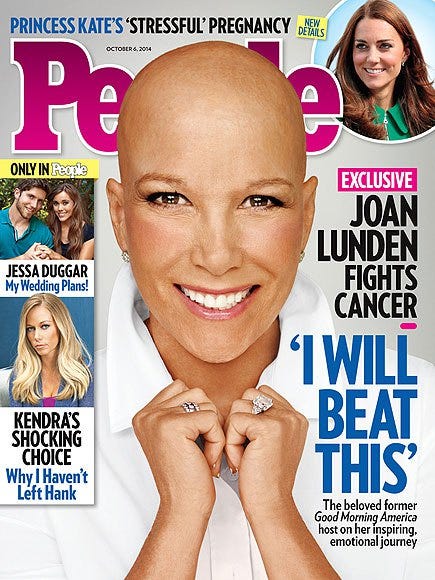


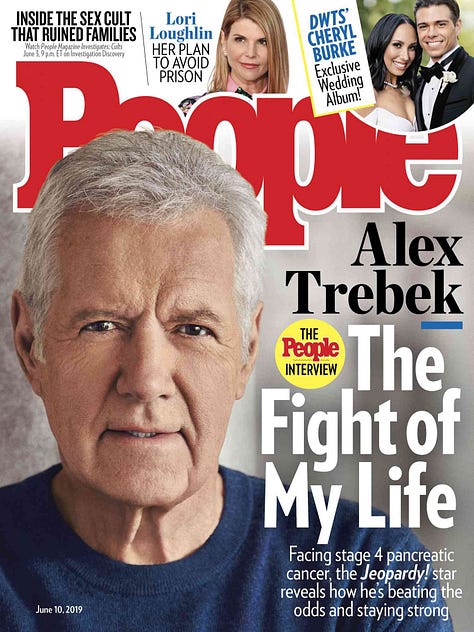



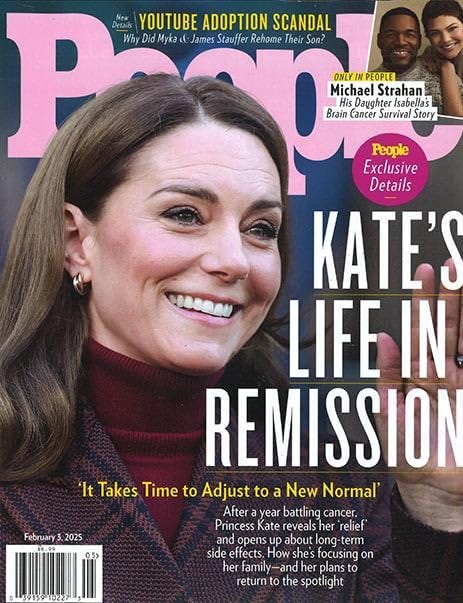
It’s not about Jolie or Kate as individuals.
It’s about the ritual theater that turns women into spiritual symbols of medical obedience. They are still called beautiful, but only after the offering. They are still praised, but only once they are sick, recovering, or reconstructed. And the public follows like birds in murmuration. Everyone that had the big C leads with “I’m a cancer survivor” The swoons in the crowd spewing melodrama at the speaker, who is now wearing a halo, completely untouchable, status elevated.
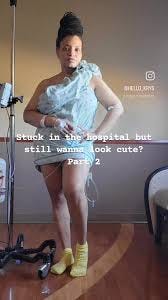

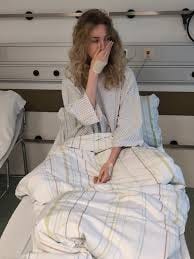






And in this way, the public is programmed again. They watch and internalize:
"Maybe if I gave more of myself, removed my breasts or testicles, they’d love and admire me too."
Mirror Neurons & the Death Wish
Here’s what most people don’t realize: the human brain doesn’t just observe, it rehearses. Every time we watch someone cry, suffer, or die on screen, our mirror neurons fire as if it’s happening to us. It’s how we learn empathy, but it’s also how we absorb subconscious behaviors, beliefs, and the emotional tone of the culture around us. When we watch someone we identify with, someone who mirrors our age, gender, fears, or longings, we don’t just see them, we become them. Their pain becomes familiar. Their story becomes encoded in our nervous system. That’s why I can look at a photo of the two little girls from Beaches and immediately feel a sadness that lives deeper than memory. Because those images weren’t just a film, they became part of my neural circuitry. They taught me how to mourn someone who never existed. They taught me that early death could be beautiful. They taught me how to cry on cue for a fantasy, and call it love. And even when I know it’s fake, I still mourn.
But why create a movie like that? Why build an entire genre of heartbreak and loss designed to leave us empty and raw? The reason is simple: because a shattered audience is easier to program. A heart cracked open by a well-scored tragedy will accept what it’s told next without question. And women are the perfect target, we are already primed for empathy and caretaking. It’s in our biology.
These movies prepare us to receive diagnosis as destiny, to hear a doctor’s voice as absolute truth, as immutable as the ocean is salty. They train us to see the physician as a god. And if we don’t like the first god, we are told to seek a second opinion from a different one—never realizing we are still bowing at the same altar. Each of them casting spells, launching decrees, delivering fate from a place above us. And after films like this, we accept it. Not just willingly. Gratefully.y do.
So when a girl watches Beaches, or Terms of Endearment, or a TikTok sick-day vlog… she’s not just sympathizing. She’s internalizing. She is literally training her nervous system to bond with suffering and bask in the attention from the digital audience and red circle dopamine hits.
The repetition creates familiarity. The emotional music anchors the scene in memory.
And the reward, attention, love, softness, forgiveness, is never shown for the healthy girl. Only the broken one. Only the one who suffers. This is just a fraction of the movies shoved down our collective throats:
The Fault in Our Stars (2014) – Teen cancer and tragic romance
Five Feet Apart (2019) – Cystic fibrosis love story with death looming
A Walk to Remember (2002) – Leukemia as divine transformation
Still Alice (2014) – Early-onset Alzheimer’s and quiet surrender
My Sister’s Keeper (2009) – Childhood cancer and bioethics heartbreak
Cake (2014) – Chronic pain, addiction, and suicidal ideation
Me Before You (2016) – Quadriplegia and assisted suicide portrayed as love
Breathe (2017) – Polio and ventilator dependence romanticized
Midnight Sun (2018) – Xeroderma pigmentosum (rare sun allergy)
To the Bone (2017) – Anorexia as identity, not imbalance
Euphoria (HBO, ongoing) – Addiction, self-harm, and mental illness as aesthetics
13 Reasons Why (Netflix) – Suicide turned into a teen mystery series
Grey’s Anatomy – A rotating showcase of exotic disorders and near-constant tragedy
This Is Us – Alzheimer’s, anxiety, trauma, and grief as core character arcs
Atypical – Autism presented as a defining lens of identity
The Good Doctor – Savant syndrome as a medical superpower
The Big Sick (2017) – Mysterious coma as a romantic bonding experience
Dying Young (1991) – Leukemia and love again, sold as poetic justice
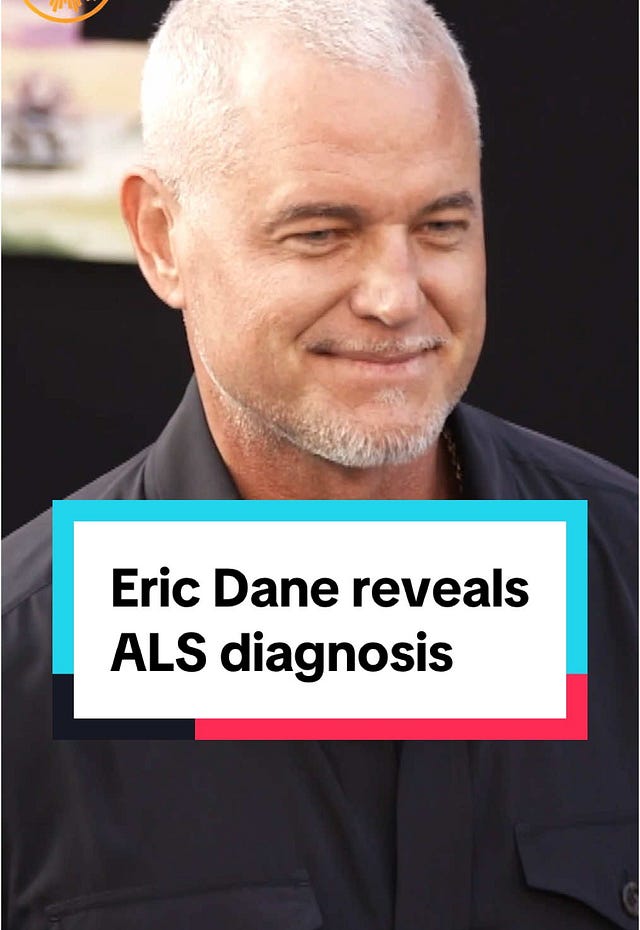 @cbsmorningsActor Eric Dane has been diagnosed with ALS, also known as Lou Gehrig’s disease. The “Grey’s Anatomy” star said he feels lucky to keep working, as he prepares to return to the “Euphoria” set next week. Dane and his family have asked for privacy. There is no cure for ALS, which causes progressive paralysis of the muscles. #ericdane #als #greys #greysanatomy #euphoria
@cbsmorningsActor Eric Dane has been diagnosed with ALS, also known as Lou Gehrig’s disease. The “Grey’s Anatomy” star said he feels lucky to keep working, as he prepares to return to the “Euphoria” set next week. Dane and his family have asked for privacy. There is no cure for ALS, which causes progressive paralysis of the muscles. #ericdane #als #greys #greysanatomy #euphoriaTiktok failed to load.
Enable 3rd party cookies or use another browser
This is the disease wish. Soap operas, daytime TV, magazines, movies are filled with “My doctor said” or “What did the doctors say?”Not because we want to die.
But because we want to be seen. Held. Loved. And in the architecture of Hollywood’s programming, death is often the only door to that desire.
This is how mass media manufactures psychospiritual vulnerability.
Not by instructing us to be ill — but by rewarding illness with visibility.
And rewarding visibility with love.
Kate Middleton’s cancer story: Announced suddenly, cloaked in mystery, and delivered with a plea to “believe” in her suffering — despite public doubt and no medical specifics
Alan Jackson – Living with Charcot‑Marie‑Tooth disease, a hereditary neurological condition affecting mobility and balance
Michael Bolton – Glioblastoma (aggressive brain cancer)
Tionne “T-Boz” Watkins – Sickle cell anemia and acoustic neuroma
Angelina Jolie’s double mastectomy: Declared a “preventative” triumph in People, normalizing breast removal based on genetic fear, not present illness
Selena Gomez’s lupus and kidney transplant: Portrayed as inspirational while quietly reinforcing lifelong pharmaceutical dependence
Christina Applegate’s MS diagnosis: Framed as an opportunity for courage and public awareness
Bruce Willis’s dementia: Introduced with somber praise, reminding us that even our heroes are not immune to neurological decay
Michael J. Fox’s Parkinson’s: Used to reinforce the narrative that deterioration is not just common, but expected
Catherine Zeta-Jones’s bipolar disorder
Demi Lovato’s overdose and rehab
Lady Gaga’s fibromyalgia
Céline Dion – diagnosed with rare neurological Stiff‑Person Syndrome, a debilitating autoimmune condition with painful muscle spasms
Eric Dane – recently revealed he’s living with ALS (Amyotrophic Lateral Sclerosis)
Tisha Campbell – has been in remission from sarcoidosis, an inflammatory disease affecting multiple organs
Megan Marx – Bachelor Australia star diagnosed with spinocerebellar ataxia, a rare progressive neurologic disorder
Karen Duffy – former MTV VJ who lives with neurosarcoidosis, a chronic inflammatory condition of the nervous system
Bruce Springsteen’s wife Patti Scialfa – Battling multiple myeloma, a rare blood cancer
Debbie Gibson – Diagnosed with Lyme disease, leading to significant weight loss and chronic symptoms
It’s almost funny until you realize the public believes in this without question and mirrors their sadness or disease. It’s not passive. It’s a spell. A long, slow death spell cast in frame after frame.
Look at the experience where medical students begin studying diseases and begin to believe they are suffering from the illnesses they’re learning about. The brain, bombarded with symptoms and pathologies, starts scanning the body for matching signals, and perception shifts accordingly. The same thing happens when a person reads about their favorite star and their challenging road ahead. I maintain that most of the brave stars don’t actually have the disease, they just received another script and role to play. Remember, Hollywood actors never stop acting.
Actors are just mind controlled puppets, usually in shape, good looking puppets, but make so mistake, they do this for the money and will do almost anything for money and attention.:
Michael Caine - Jaws: The Revenge "I have never seen it, but by all accounts it is terrible. However, I have seen the house it built, and it is terrific.Jeremy Irons - Dungeons & Dragons "I just bought a castle! I had to pay for it somehow."
Sigourney Weaver - Alien: Resurrection “They basically drove a dump truck full of money to my house”
Glenn Close - Guardians of the Galaxy “I’m doing that because it will then afford me to go do the other kind of movies that I really love, and hopefully I will have a great time [on Guardians of the Galaxy]. It’ll be a new experience for me, but practically speaking it will mean that I can do those smaller movies and it’ll be okay.”
Jackie Chan - Rush Hour Movies The Hong Kong actor starred in all three Rush Hour movies alongside Chris Tucker, but wrote on his blog that he only did them because he was offered an “irresistible” amount of money.
Laurence Olivier - Inchon "People ask me why I'm playing in this picture. The answer is simple: Money, dear boy."
Steve Buscemi - Armaggeddon “I wanted a bigger house."
Richard Dreyfuss - Red 2 and Piranha 3D ‘I Did It for the Money’
Paul Bettany - Iron Man "I feel like a pirate. This is robbery. I walk in, I say some lines on a piece of paper for two hours, and then they give me a bag of money and I leave and I go about my day.
Ben Affleck - Paycheck When Ben Affleck was promoting Paycheck - which he won the Razzie Award for worst actor - on Conan O'Brien, Conan asked him why he did the film, and Ben simply replied: "the answer lies in the title."
Helen Mirren - Teaching Mrs. Tingle "Because they gave me a shitload of money to do it."
Hugo Weaving - Transformers "It was one of the only things I've ever done where I had no knowledge of it, I didn't care about it, I didn't think about it."They wanted me to do it. In one way, I regret that bit. I don't regret doing it…it was meaningless to me, honestly. I don't mean that in any nasty way."
Eddie Murphy - Best Defense “When he was offered a part in rubbish comedy war film, Best Defense, Eddie joked on Saturday Night Live: "What?! How dare you give me a script like this! Oh, THAT much money? Let's go!"
When asked about how he took on the role, Murphy replied: "How did I get involved? The door opened, and four men came in carrying a check."
Shaquille O'Neal - Kazaam The man himself told GQ in 2012: "I was a medium-level juvenile delinquent from Newark who always dreamed about doing a movie."Someone said 'Hey, here's $7 million, come in and do this genie movie.' What am I going to say, no?"''
Sylvester Stallone - Rocky V "I'm greedy - what can I tell you?
The Cast of Ocean's Twelve More-or-less the entire cast of the Ocean's Eleven sequel has admitted they just wanted to get paid to party at George Clooney's villa.
Brad Pitt joked that he thought it was funny that Catherine Zeta-Jones "thought we were making a movie." “I think that the biggest joke was on Catherine because she actually thought that we were making a movie. Being the new kid no one told her. So she was up learning lines and doing character breakdowns, and we just let her roll with it.”
And more actors acting (just a fraction of the shills shilling for shekels):
Jennifer Aniston – Dry eye eye drops (Restasis, Allergan)
Ray Liotta – Chantix (varenicline, Pfizer)
Blythe Danner – Prolia (denosumab, Amgen)
Ashley Tisdale – Lo Loestrin Fe (ethinyl estradiol/norethindrone, Teva)
Cyndi Lauper – Cosentyx (secukinumab, Novartis)
Christina Hendricks – Latisse (bimatoprost, Allergan)
Brooke Shields – Latisse (bimatoprost, Allergan)
Serena Williams – Migraine med (Ubrelvy or Qulipta, AbbVie)
Khloe Kardashian – Migraine med (Nurtec ODT, Biohaven)
Jon Bon Jovi – Pain reliever (Tylenol or similar, Pfizer)
Phil Mickelson – Enbrel (etanercept, Amgen/Pfizer)
Shaquille O’Neal – BiDil (isosorbide dinitrate/hydralazine, Novartis originally)
Chris Bosh – Xarelto (rivaroxaban, Janssen)
Paul Sorvino – Lantus (insulin glargine, Sanofi)
Mira Sorvino – Lantus (insulin glargine, Sanofi)
Mayim Bialik – Abilify (aripiprazole, Otsuka/Lundbeck)
Sally Field – Boniva (ibandronate, Roche/Genentech)
Queen Latifah – Zyrtec (cetirizine, Pfizer)
Bob Dole – Viagra (sildenafil, Pfizer)
Jamie Lee Curtis – Activia (probiotic drink, Danone)
Dorothy Hamill – Vioxx (rofecoxib, Merck—withdrawn)
Joe Montana – Levitra (vardenafil, Bayer/GSK)
Frankie Muniz – Accutane (isotretinoin, Roche)
Nick Jonas – Dexcom (continuous glucose monitors, DexCom)
Larry the Cable Guy – Prilosec OTC (omeprazole, AstraZeneca)
LeAnn Rimes – Orencia (abatacept, Bristol-Myers Squibb)
Deborah Norville – Claritin (loratadine, Bayer)
Marcia Cross – Hormonal therapies (breast cancer treatments like tamoxifen, AstraZeneca)
Montel Williams – MS medications & medical marijuana (various manufacturers)
Anthony Anderson – Type 2 diabetes meds (Ozempic, Novo Nordisk)
Sheryl Crow – Genentech breast cancer awareness (Herceptin, Roche)
Angela Bassett – “For Your SweetHeart” campaign (J&J’s diabetes/heart meds)
These people don’t have a conscious, they are after a paycheck and attention. They don’t care who they are or what stands in the way of either. These people on screens matter to you, but you are not even a blip on their radar other than a means to an end.
They Taught Us to Die Beautifully
This isn’t about one movie.It’s about an entire industry built on the performance of suffering — and the programming of the viewer to accept it. Hollywood did not just glorify illness. It made it sacred and untouchable. You can’t criticize a wounded warrior. You become the monster if you do.
It gave us beautiful soon to be corpses, soft hospital light, swelling orchestras, tearful goodbyes. And they believed it. And they didn’t just admire the heroines. They became them.
But now we can see the stage.We see the lights. We see the script. We see the scalpel waiting in the wings. And we can say no. We can stop mindlessly watching and the rehearsing death. We can stop performing illness.
We can remember what it feels like to be well, not just physically, but spiritually.
The most radical thing we can do now is turn it off. Walk out of the theater.
Reject the spell. And reclaim the role we were never given: our own.





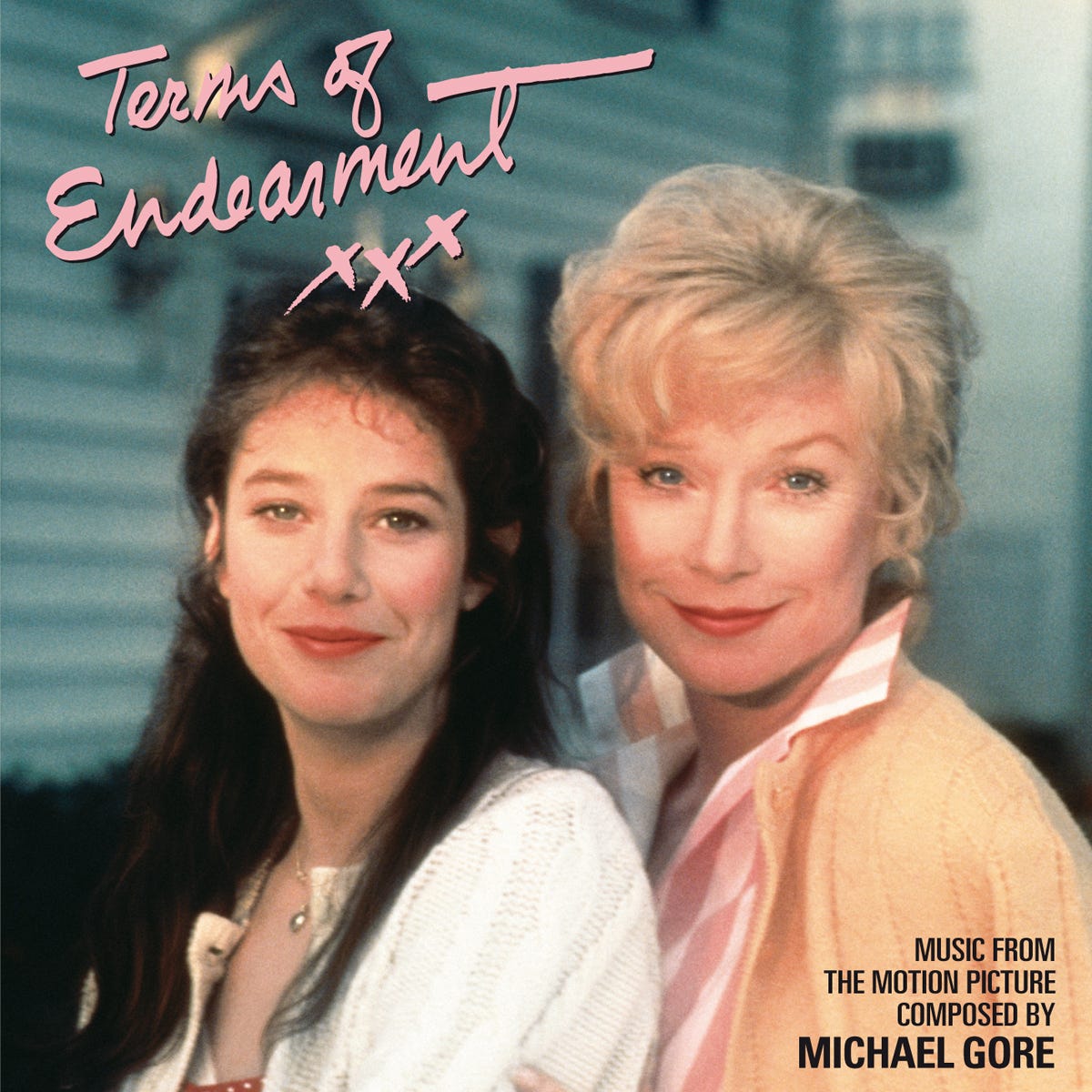
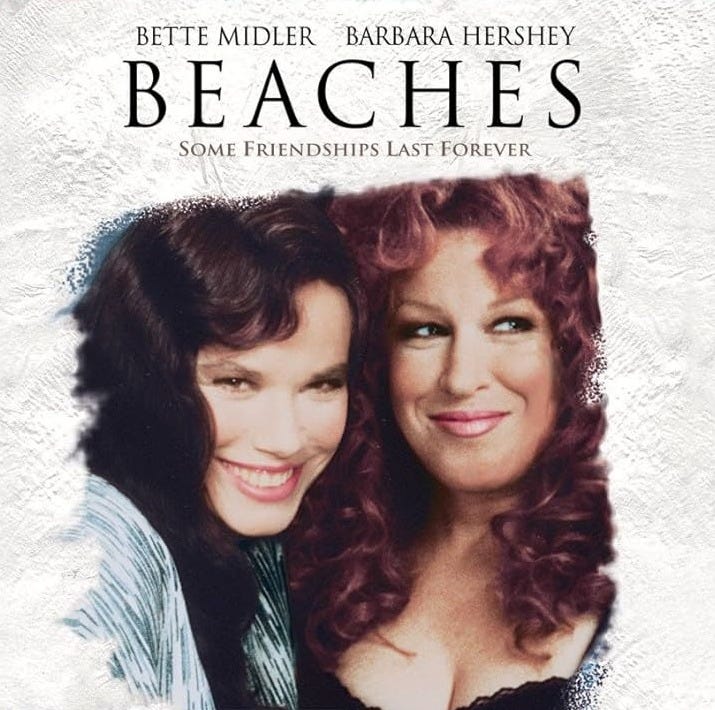

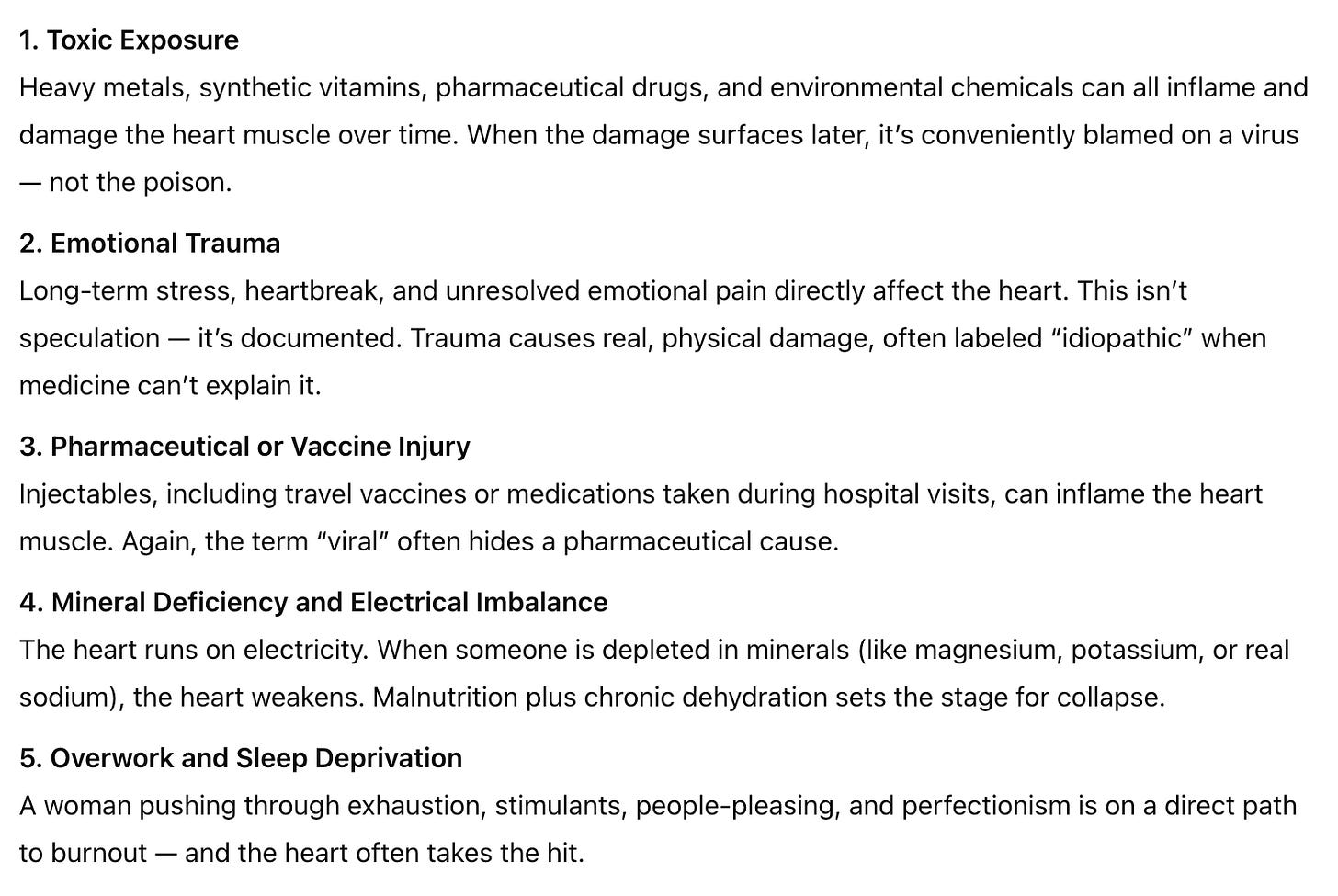
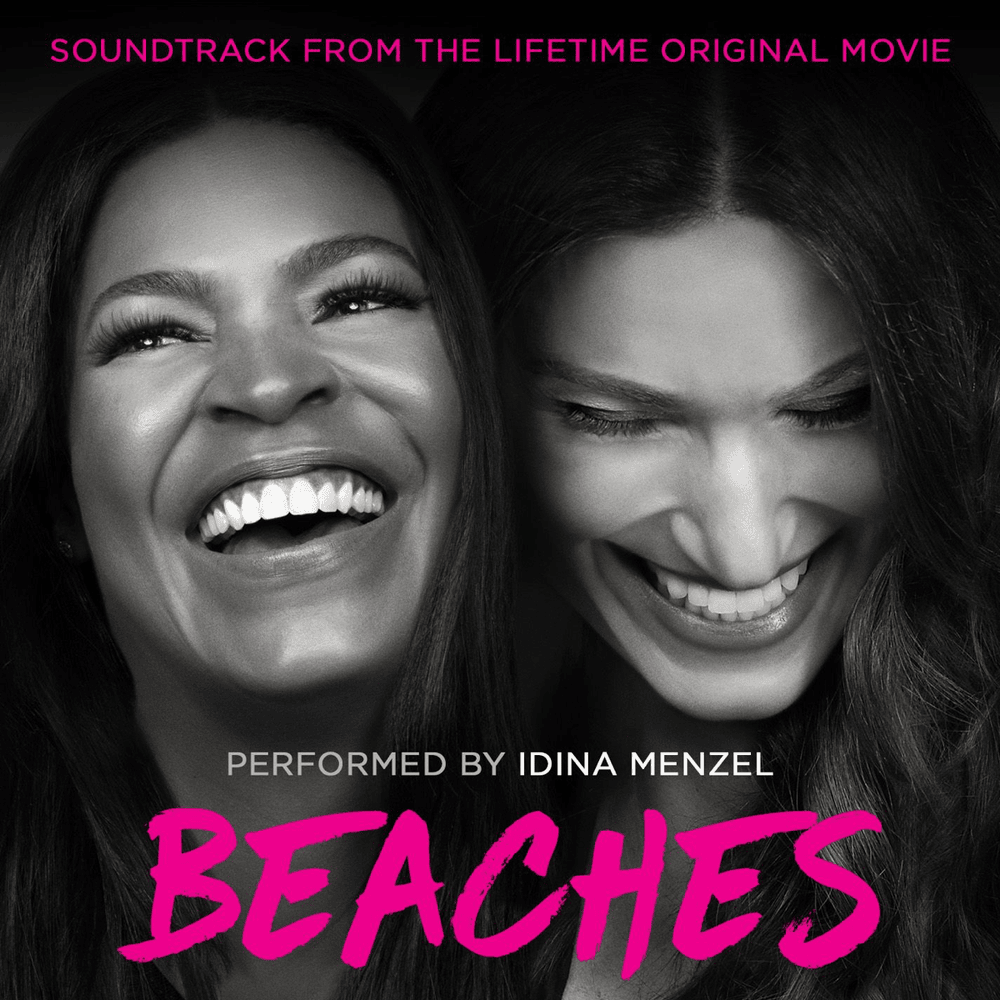
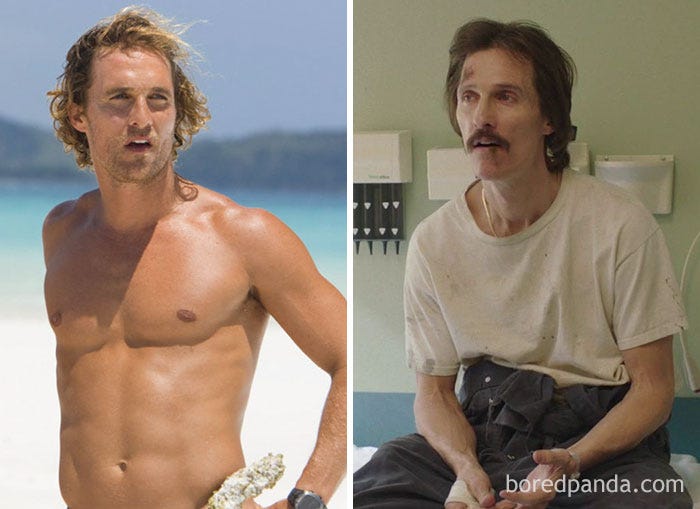



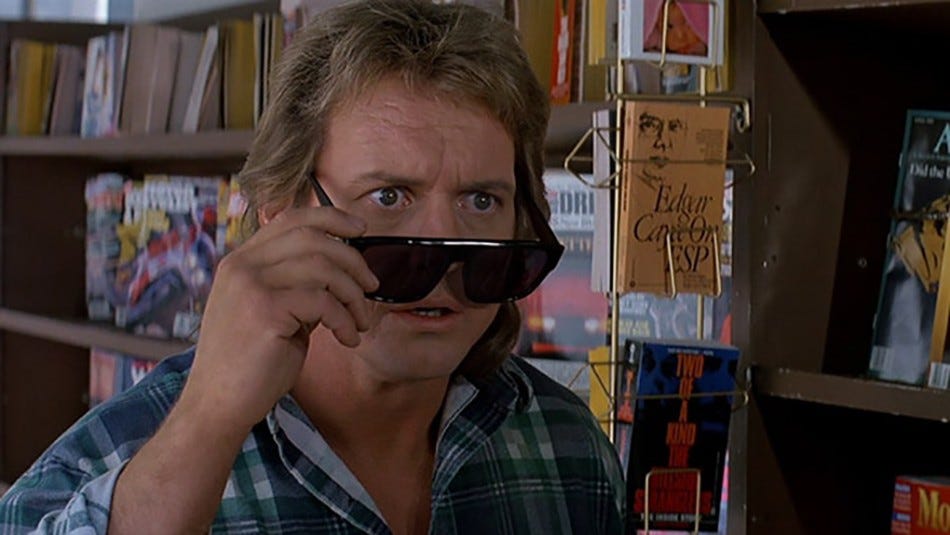
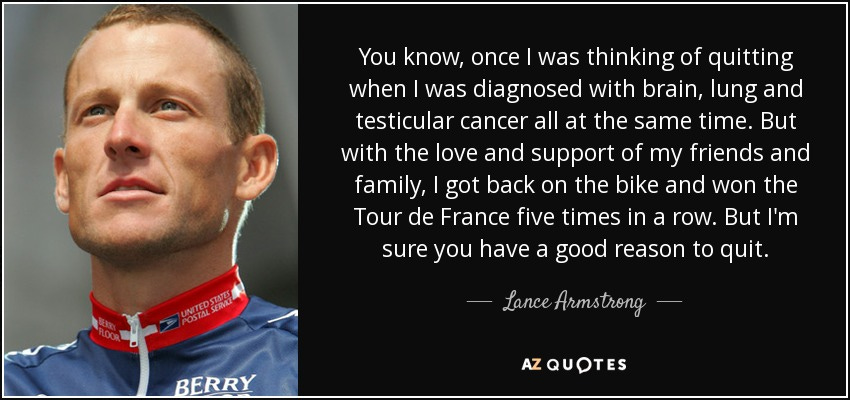

You left out Love Story. The most corny, maudlin, and treacly “dying young” movie ever made. Possibly the progenitor of the entire genre.
I totally agree.
I never watched even one of those movies....most of them I never even heard of.
So, my intuition guided me away from them & others.
(I haven't watched any movies in the last decade, very few even before that).
I am recognizing now the many things I avoided most of my life & still do.
Avoidance is one of my biggest tools.